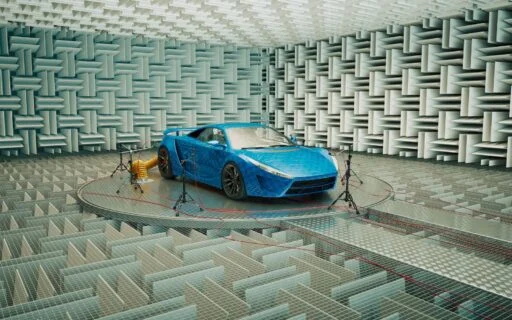Why Speaker Placement Matters in Car Audio Systems – Elite Auto Gear Breaks It Down

When upgrading your car’s audio system, most people focus on the quality of speakers, amplifiers, or subwoofers. While those choices are critical, one factor often overlooked is speaker placement. Even the best speakers won’t perform at their peak if they’re poorly positioned. At Elite Auto Gear, we know from experience that placement directly impacts clarity, sound staging, and overall listening experience.
This guide explores why speaker placement matters, how different locations affect sound, and what strategies you can use to optimize your car’s audio system.
The Science Behind Speaker Placement
Unlike home theater systems, car interiors create unique challenges for sound reproduction. Every vehicle is different in size, shape, and material, which all influence how sound travels.
Key considerations include:
-
Reflections – Hard surfaces like windows and dashboards can reflect sound, causing distortion.
-
Absorption – Soft materials like seats and carpeting absorb certain frequencies.
-
Distance to the Listener – Speakers placed closer to one ear than the other create an unbalanced soundstage.
Proper placement minimizes these issues and helps ensure you hear music as intended.
Front vs. Rear Speaker Placement
Front Speakers
Front speakers are the most important for creating a strong soundstage. Ideally, music should sound like it’s coming from in front of you, not behind. High-quality component or coaxial speakers in the front doors or dash bring vocals and instruments forward, where your ears naturally focus.
Rear Speakers
Rear speakers provide depth and fill, but they should never overpower the front stage. Instead, they complement the front by adding balance, particularly for passengers in the back seats.
The Role of Tweeters, Midrange, and Woofers
Tweeters
Tweeters reproduce high frequencies such as cymbals and vocals. Mounting them too low, like in door panels, can make highs sound muted. Placing tweeters higher, on A-pillars or dashboards, creates a more realistic listening environment.
Midrange Drivers
These handle vocals, guitars, and instruments. Placing midrange drivers in doors allows them to project directly toward the listener. Door placement also provides enough enclosure space for proper resonance.
Woofers and Subwoofers
Lows are less directional, which means placement isn’t as critical as with tweeters. Subwoofers can be mounted in trunks, under seats, or in enclosures behind seats. However, enclosure type and orientation (sealed, ported, or bandpass) still influence performance.
Common Placement Mistakes
-
Overemphasizing Rear Speakers – Relying too heavily on rear speakers can drown out the soundstage.
-
Misaligned Tweeters – Tweeters facing away from the listener reduce clarity and detail.
-
Subwoofer Imbalance – A subwoofer with poor placement or tuning can overpower mids and highs.
-
Ignoring Soundproofing – Without sound-deadening materials, vibrations and road noise interfere with speaker output.
Strategies for Optimal Speaker Placement
1. Time Alignment
Modern amplifiers and head units allow for digital time alignment. This compensates for the difference in distance between speakers and your ears, making sound reach you simultaneously.
2. Crossovers
Using crossovers ensures each driver only handles frequencies it’s designed for. For example, tweeters shouldn’t attempt to reproduce bass frequencies. Proper crossover tuning improves performance regardless of placement.
3. Custom Mounts
Serious enthusiasts often install custom pods for tweeters or midrange drivers. This allows precise angling toward the listener, significantly improving imaging.
4. Subwoofer Orientation
Experimenting with subwoofer orientation (firing toward the rear of the trunk vs. upward or forward) can dramatically alter how bass feels inside the cabin.
Elite Auto Gear’s Insights
At Elite Auto Gear, we’ve seen countless setups where customers invested in high-end equipment but weren’t satisfied with the results. The culprit almost always comes down to poor placement or tuning. By simply adjusting tweeter angle, repositioning speakers, or reorienting subwoofers, we’ve turned average systems into incredible ones without adding new gear.
We emphasize:
-
Front soundstage priority – Build your system around the front stage first.
-
Balanced sub integration – Subwoofers should complement, not dominate.
-
Experimentation – Every car interior is different, so testing multiple placements is key.
Where the Deaf Bonce M81AC Fits In
When discussing placement, it’s worth mentioning high-performance drivers like the deaf bonce m81ac. These types of mid-bass drivers are designed for precision, but their effectiveness depends heavily on where and how they’re installed. Positioning them correctly in doors or custom panels ensures they deliver powerful, punchy mid-bass that transitions smoothly to your subwoofer. Poor placement, on the other hand, can waste their potential, making them sound muddy or disconnected.
Professional vs. DIY Placement
While many car owners handle speaker installation themselves, placement and tuning can be tricky. Professional installers use tools like RTA (real-time analyzers) and measurement microphones to identify frequency imbalances.
That said, DIYers can achieve excellent results with patience. Start by experimenting:
-
Angle tweeters toward ear level.
-
Adjust crossover points gradually.
-
Test subwoofer orientations before permanently securing.
Final Thoughts
Speaker placement is one of the most overlooked aspects of car audio, yet it plays a defining role in sound quality. Proper placement brings balance, depth, and realism to your music, while poor placement can make even the best speakers underperform.
At Elite Auto Gear, we break it down simply:
-
Prioritize the front stage.
-
Tune and align for balance.
-
Don’t underestimate the impact of angles and orientation.
Whether you’re installing premium drivers like the deaf bonce m81ac or upgrading with coaxials, your placement decisions will determine how much performance you truly unlock. With the right setup, every drive can feel like a live concert — detailed, powerful, and unforgettable.






